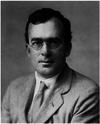Abstract
Within the Hartree atomic unit systems, the Schrödinger equation becomes parameter free. But there’s more to it than making a student’s life easier, as Gordon Drake and Eite Tiesinga recount.
Introductory courses on quantum mechanics typically include the three-dimensional Schrödinger equation for the idealized hydrogen atom
to determine the allowed wavefunctions ψ(r), where r is the separation between the electron and proton, and the energies or eigenvalues E are given in the metric SI (Système International) system of units. Here is the reduced Planck’s constant, e is the elementary charge, me is the electron mass and ε0 is the vacuum permittivity. For students, this equation can be intimidating, and defining the welter of fundamental constants as well as giving their numerical values is distracting, particularly, as some of them are known to about ten significant digits while others, such as , are exactly defined. The main goal of the exercise is to teach how boundary conditions near the origin and at infinity determine the eigenvalues. Although the exact values of the constants are not needed until the end of the calculation, it is hard to even make an order-of-magnitude estimation.
In the earliest days of quantum mechanics, these same problems must have plagued Douglas Hartree (pictured) as he struggled with the complexities of solving the Schrödinger equation for many-electron atoms and molecules. This brought Hartree face to face with the many-body problem in quantum mechanics. Just as in the classical equivalent, the equations of motion for an atom with two or more electrons cannot be solved exactly, and so approximations must be used. Hartree’s idea was to assume that each electron moves in the average field produced by all the others. The resulting equations are now known as the Hartree equations, and, if the indistinguishability of the electrons is taken into account, the Hartree–Fock equations after the Russian physicist Vladimir Aleksandrovich Fock. Today, these equations and their extensions are widely used throughout the atomic physics and quantum chemistry communities to predict properties of atoms and molecules.
In a series of papers beginning in 19281, Hartree simplified the complex system of equations by introducing what have now become known as ‘atomic units’. This system of units boldly cuts through the numerical complexities of the fundamental constants by defining a length scale a0 (the Bohr radius) and energy scale (the Hartree energy). With some algebra, we get m (ref.2), where the number in parenthesis is its one-standard-deviation uncertainty.
If we agree to measure energy in units of the Hartree energy and distance in units of the Bohr radius, then the Schrödinger equation for hydrogen assumes a simple parameter-free form and we can just perform the calculations in atomic units, and multiply the resulting energies by the currently most accurate value of Eh, which is 27.211386245988(53) eV (ref. 2).
The technique used to determine this value takes us to the forefront of modern physics. The numerical value of the Hartree energy, one of the most precisely known physical constants, is set by high-precision measurements of the 1s–2s transition energy in atomic hydrogen. The interpretation of the experiment in terms of the Hartree energy requires knowledge of many small theoretical corrections to the lowest-order result from the Schrödinger equation. Most relevant here is that the root-mean-square charge radius of the proton leads to a small, hard-to-pin-down energy correction. In fact, until recently, the entire field was clouded by the ‘proton radius puzzle’: the extremely accurate value obtained from muonic hydrogen3 differed by several standard deviations from a less accurate value from electronic transitions and electron–proton scattering. This puzzle gave rise to an attempt to account for the discrepancy that lasted over ten years and has now been resolved in favour of the muonic-hydrogen value4.
In principle, this resolution opens the way to a much more accurate determination of the Hartree energy. However, as recently pointed out by Yerokhin et al.5, this will require the theoretical evaluation of as-yet-unknown two- and three-loop quantum electrodynamic effects, because these are now the main source of uncertainty, and such evaluations are truly challenging. Results from upcoming searches for new physics beyond the standard model and variations of the fundamental constants over cosmological time periods might make these evaluations even more important. It is in the tiny deviations from conventional theory that the first hints of new physics may appear.
Biography

Credit: Science & Society Picture Library / SSPL / Getty Images
References
- 1.Hartree DR Math. Proc. Camb. Phil Soc 24, 89110 (1928). [Google Scholar]
- 2.Tiesinga E, Mohr PJ, Newell DB & Taylor BN Values of fundamental physical constants. NIST https://physics.nist.gov/cuu/Constants/index.html (2019). [Google Scholar]
- 3.Pohl R et al. Nature 466, 213–216 (2010). [DOI] [PubMed] [Google Scholar]
- 4.Bezginov N et al. Science 365, 1007–1012 (2019). [DOI] [PubMed] [Google Scholar]
- 5.Yerokhin VA, Pachucki K & Patkóš V Ann. Phys 531, 1800324 (2019). [Google Scholar]


